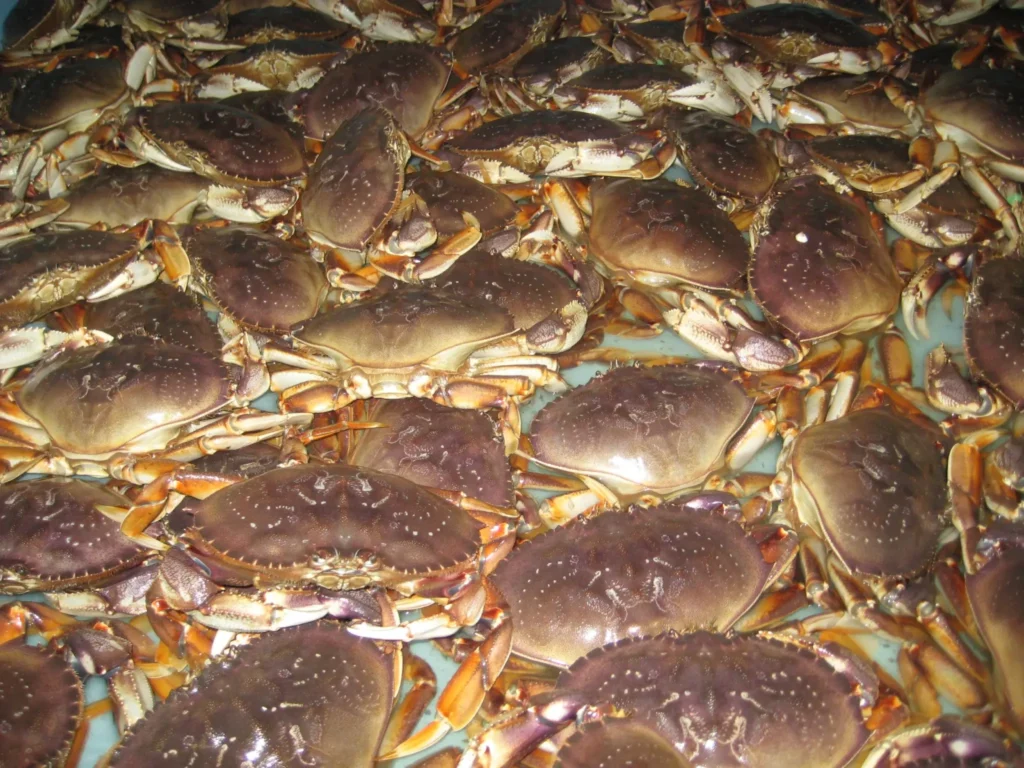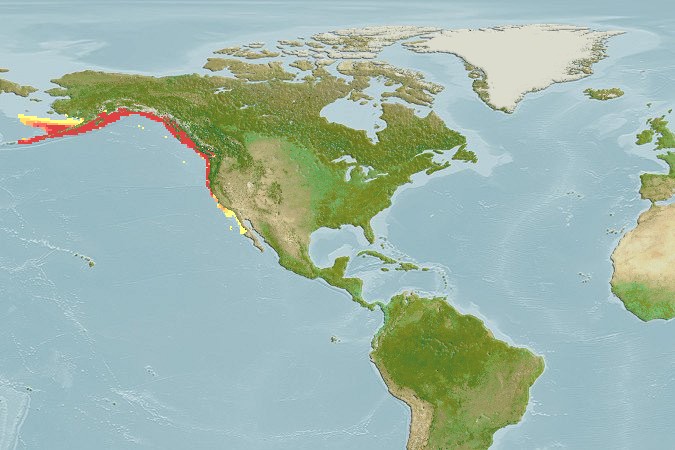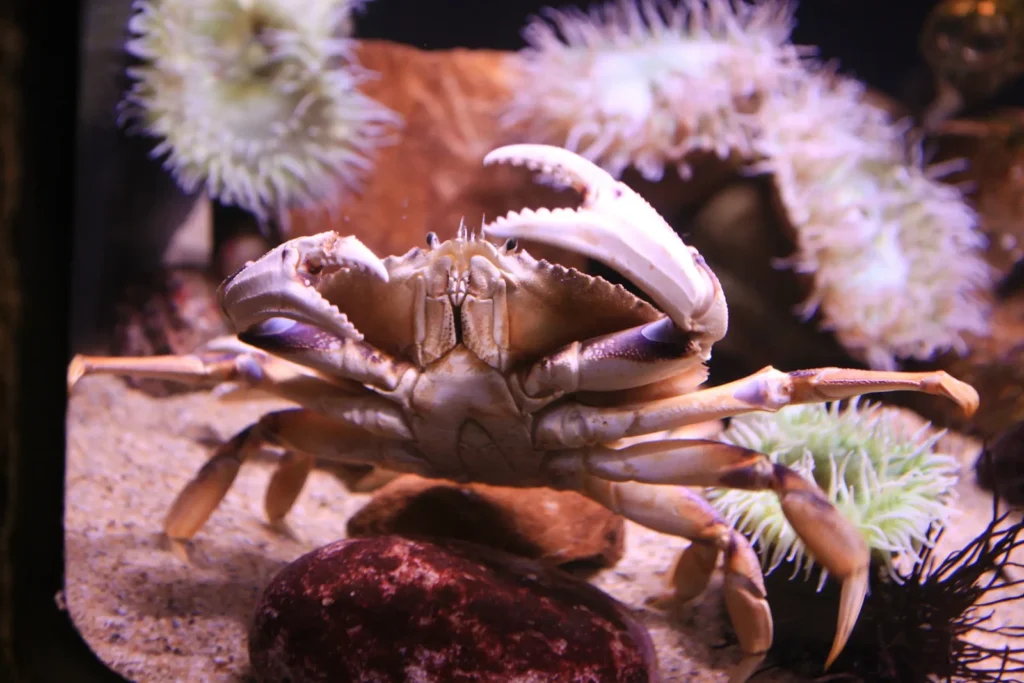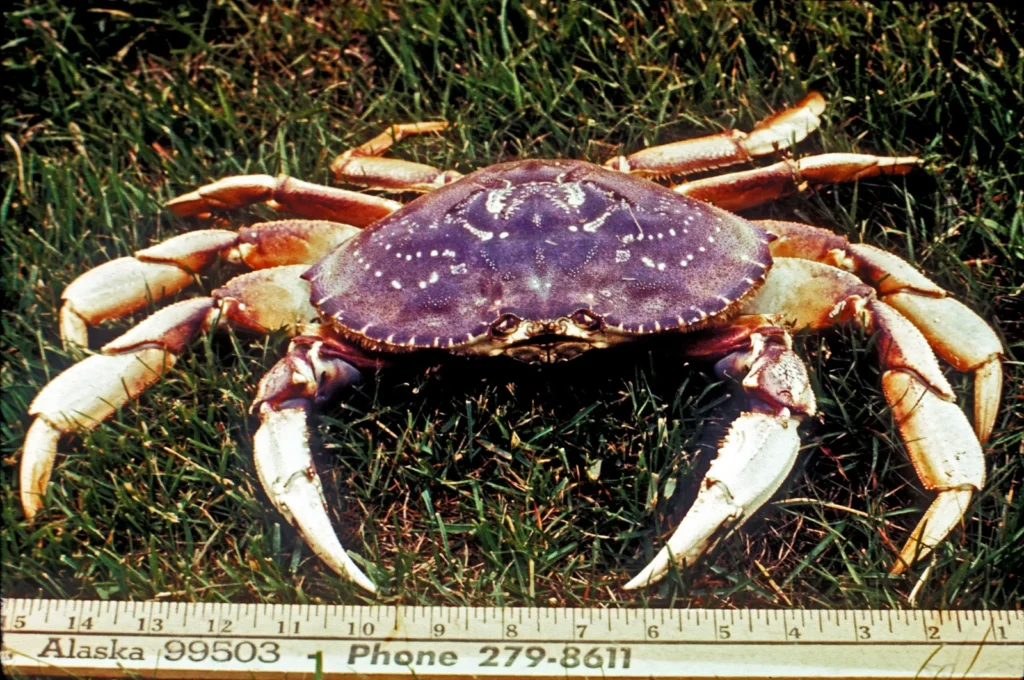Dungeness crab, or Metacarcinus magister, is one of the most important commercial crabs in North America. Its meat is valued for its tenderness, sweet taste, and high quality, and the crab itself is valued for its modest size and relative peaceability. Despite this, in nature it plays an important ecological role as both predator and prey.

Classification
• Kingdom: Animals (Animalia)
• Phylum: Arthropoda (Arthropoda)
• Class: Crustaceans (Malacostraca)
• Order: Decapoda
• Homeland: Cancridae
• Genus: Metacarcinus
• View: Metacarcinus magister
Appearance
📏 Sizes
• Adults reach 20–25 cm in carapace width
• Weight — from 0.7 to 1.5 kg
🎨 Description
• Carapace smooth, slightly oval, with serrated edges at the front
• Color — brownish-purple above, with a cream or light belly
• Claws are symmetrical, powerful, often with white tips
• Males have a narrow abdomen, females have a wide, rounded abdomen (important for identification during fishing)

Range and habitat
🌍 Area
• North American West Coast: from the Aleutian Islands in Alaska to central California
• Especially common off the coasts of Oregon, Washington, and British Columbia
🌿 Living environment
• Lives on sandy or muddy bottoms
• Occurs at depths from the intertidal zone to 200 m
• Often lives in estuaries (river mouths) where salinity is lower

Behavior
🔄 Activity
• Leads a predominantly nocturnal lifestyle
• Can move both slowly and suddenly make a leap in case of danger
🛡️ Defense and aggression
• Juveniles hide in seaweed or under sand
• In case of danger, they actively defend themselves with their claws
• During molting, they are vulnerable, so they hide.
🪶 Migrations
• Small seasonal movements, particularly to river mouths at a young age
Food
🍽️ Ration
• Omnivorous — feeds on mollusks, small fish, sea worms, other crabs
• Carcass is also part of the diet
• Juveniles often eat zooplankton and small benthic invertebrates
⚖️ Environmental role
• An important link in the food chain: both predator and prey for octopuses, sea otters, fish
• Controls populations of mollusks and benthic organisms

Reproduction
🦪 Puberty
• Females mature at 2–3 years of age
• Mating occurs after the female molts.
⏳ Caviar and development
• The female lays up to 2 million eggs, which she carries on her abdomen for about 3 months
• Larvae go through several planktonic stages and settle to the bottom after 3–4 months
• Young crabs grow slowly, molting several times a year
Meaning for a person
💰 Craft
• Dungeness crab is the most important commercial crab on the West Coast of the United States
• Fishing is strictly regulated:
– only males with a minimum carapace width are allowed to be caught (usually from 6.25 inches ≈ 16 cm)
– females and immature crabs are released
🍴 Culinary value
• The meat is tender, sweet, and low in fat.
• Often served whole or in the form of crab cakes, salads, soups
• Featured on the menu of many restaurants on the West Coast of North America
🛑 Threats
• Overfishing is a major problem, but with strict control, the population remains stable
• Parasites (e.g. nematodes) and toxins (e.g. domoic acid from algal blooms) can make meat unsafe to eat
Interesting facts
✔️ The crab was named “Dungeness” after the port of Dungeness in Washington state, where it was first caught commercially.
✔️ Can live up to 10 years in the wild
✔️ Females usually shed more often than males
✔️ One of the few crabs that are caught only by hand (with traps), without the use of trawls
✔️ It is a symbol of the cuisine of the West Coast of the USA and Canada
Conclusion
Metacarcinus magister — it is not just a delicious seafood dish, but a keystone species of marine ecosystems, of great ecological and economic importance. Its temperate behavior, interesting biology, wide distribution and culinary fame have made the Dungeness crab a favorite of biologists, fishermen and chefs. But as with all marine resources, its fishing should be approached with understanding and respect for nature.
